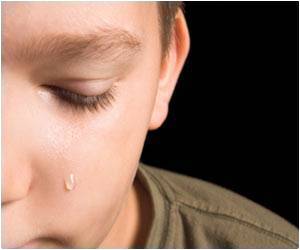Children who experienced difficult situations from ages 3 to 5 showed the largest differences in DNAm levels when they reached 15 years old.

A team of researchers at Massachusetts General Hospital (MGH), a founding member of Mass General Brigham (MGB), previously showed that exposure to adversity between ages 3 to 5 has a significant effect on the epigenome of children at age 7, altering biological processes that may be linked to deleterious long-term health outcomes.
Now, in a new study published in The Lancet Child & Adolescent Health, these researchers demonstrate how the timing of exposures to adversities in early childhood affects epigenetic patterns in adolescence.
“To our knowledge, this is the first study to examine the time-varying influences of childhood adversity on epigenetic mechanisms from childhood to adolescence,” says first author Alexandre A. Lussier, PhD, research fellow at MGH and Instructor in Psychology at Harvard Medical School. “We wanted to determine if the epigenetic profiles associated with adversity that we observed in children at age 7 persisted into adolescence and whether the timing of exposure to adversity influenced epigenetic trajectories across development.”
‘The study discovered that children who faced challenging circumstances between the ages of 3 and 5 had the most significant variations in DNAm levels by the time they reached 15 years old, in comparison to adolescents who hadn't encountered childhood adversity. #ChildhoodAdversity #ChildAbuse
’





Advertisement
Study Collects Measures of Childhood Adversity, Epigenetic Profiles
The investigators studied changes in epigenetic mechanisms - specifically DNA methylation (DNAm) - in children enrolled in the Avon Longitudinal Study of Parents and Children, a 30-year-long prospective birth cohort from the United Kingdom that has followed 13,988 children from before birth through early adulthood. The unique study has collected multiple measures of childhood adversity and epigenetic profiles across the lives of participants.“Epigenetics acts at the intersection between a person’s genome, which is set at conception and is stable, and the environment, which is always changing,” explains Lussier. “Epigenetic mechanisms, which are sensitive to environmental factors, function like a dimmer switch on our genes, controlling how much of the gene is expressed and how much is turned off over time.”
Measuring levels of DNAm captures information about how genes are expressed, and these epigenetic signatures could serve as a biological indicator or early warning sign of disease processes, helping to identify people at greater risk for future disease.
In this study, the researchers analyzed DNAm at three time points - at birth from cord blood, and at ages 7 and 15 from blood - and investigated the timing of exposure to seven adversity types, including neglect, different types of abuse, poverty, and family dysfunction (1✔ ✔Trusted Source
Association between the timing of childhood adversity and epigenetic patterns
Go to source).
“These data allowed us to investigate whether exposure to childhood adversity during certain periods in development had greater impacts on biological processes and how exposures during these sensitive periods influence epigenetic trajectories across development in the same children,” says Lussier.
Advertisement
Single-Parent Households Linked to More DNAm Changes
The researchers found that children exposed to adversity between the ages of 3 through 5 had the greatest differences in DNAm levels at age 15 compared with adolescents who had not experienced childhood adversity.“The preschool period may be a sensitive period for the biological embedding of childhood adversity that manifests in adolescence”, says senior author Erin C. Dunn, ScD, MPH, Associate Investigator, Center for Genomic Medicine at MGH and Associate Professor of Psychiatry at Harvard Medical School.
In particular, exposures to one-adult households (single-parent families) were linked to more changes in DNAm in adolescence than other types of childhood adversity, such as maternal depression, financial hardship, or abuse.
They also found that DNAm patterns previously identified in children exposed to adversity did not persist into adolescence. And at age 15, there were epigenetic changes not present earlier in development. These findings may explain why there are both immediate and latent manifestations of disease among people with histories of childhood adversity.
Advertisement
Epigenetic Patterns Impact Early Risk Prediction Clinically
“These findings are important because they suggest our epigenome may be dynamic across our lifespan,” says Dunn. “In other words, our bodies adapt, in good ways and bad, in response to our life experiences. If true, then interventions could be mounted to help reverse negative epigenetic changes that occur in response to adversity.”Hundreds of previous human studies have shown links between childhood adversity, DNAm, and poor health outcomes, but more research is needed to determine whether epigenetic changes are one of the underlying mechanisms that influence long-term physical and mental health, says Lussier.
“Our study is a first step in demonstrating a relationship between the timing of childhood adversity and epigenetic changes. But if our results are replicated, epigenetic patterns could potentially have important clinical implications for early risk prediction, disease prognosis, responses to therapy, and critical timing for interventions to buffer the deleterious effects of childhood adversity may have greater success.”
As one of the next steps for this research, the investigators are currently studying whether DNAm changes affect how cells function by using in vitro cell culture models.
Reference:
- Association between the timing of childhood adversity and epigenetic patterns - (https://www.thelancet.com/journals/lanchi/article/PIIS2352-4642(23)00127-X/fulltext)
Source-Eurekalert











